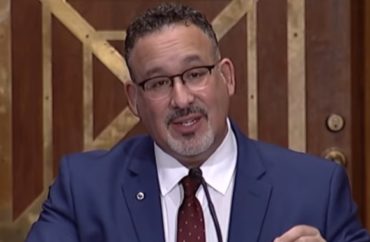
The U.S. Department of Education on Friday announced it has discovered a new calculation error that caused the wrong information for several hundred thousand student financial aid applications to be sent to colleges this month and will need to reprocess them.
This comes on top of a series of other major mistakes made in reformulating the Free Application for Federal Student Aid, or FAFSA, which was due earlier this year.
The new glitch means that massive numbers of college applications will be further delayed, pushing the process in which colleges make financial aid offers to students back, perhaps by a couple of months.
Usually colleges send financial aid decisions to students in March, and expect a decision back on whether the student will enroll by May 1. This year only a small percentage of student FAFSA forms were sent to colleges by the government in time for that to happen. The department has encouraged schools to push back their deadlines.
“This is another unforced error that will likely cause more processing delays for students,” Justin Draeger, CEO of the National Association of Student Financial Aid Administrators, said in a statement.
“At this stage in the game and after so many delays, every error adds up and will be felt acutely by every student who is counting on need-based financial aid to make their postsecondary dreams a reality,” he added.
This latest glitch comes on top of a year in which the FAFSA redesign, to make it easier for students and parents to use, has come in late or unworkable at every stage.
The redesign was supposed to take the form from 108 questions to less than half of that, and fewer still for some people. It uses a “new and more generous formula to determine eligibility for federal student aid,” the Associated Press reported.
But the overhaul delayed the launch of the new application from October to late December. And then, when it launched, it was full of software bugs that made it impossible for many people to access the forms, according to various news reports.
The Education Department has had three years to do the overhaul. The New York Times reports that the Government Accountability Office is looking into the debacle at the request of Republicans in Congress. GOP members said that the overhaul took a backseat to other, more political policies, like President Joe Biden’s student loan debt forgiveness.
U.S. Sen. Bill Cassidy, a Louisiana Republican and head of the Senate Health, Education, Labor, and Pensions Committee, said in a statement that in “the last three years, the Biden administration’s Department of Education has put considerable time and resources to prioritize their student loan schemes.”
“But,” he added, “they’ve been unable to fulfill their basic responsibilities mandated by Congress and essential to American families.”
In general, about 17 million students fill out the FAFSA, seeking financial aid from the colleges they are considering attending. This year, as of mid-March, the AP reported, only 5.5 million students have been able to fill out the new FAFSAs forms due to the technical blunders.
Advocates for students, and especially low income or first generation college students, have said they are worried that some, lacking any information about what they are expected to pay, will simply decide not to attend college, or not to attend it next fall.
For many others these delays mean that, realistically, they will be making their decisions about where to go in June and July. They may have been admitted to the college of their choice, but if they don’t have the financial aid information telling them the basic price of college, they can’t make a rational decision.
College admission experts have warned that is problematic for students, and just as problematic for colleges and universities, which need to know that they have a freshman class coming in, and who will be paying what.
For their part, colleges are delaying sending potential students the information they need, because they don’t have the FAFSA forms to process. Without knowing how much a student is going to get in federal aid, including Pell grants, schools have a hard time figuring out what the student should be paying out of standard tuition, and how much money in grants and scholarships the schools will need to offer.
One particular problem with the new FAFSA form is that it would not process students who don’t have social security numbers for themselves or their parents, essentially undocumented students in the country illegally.
To get them processed, the New York Times reported, the Education Department “asked applicants … to submit by email photographs of a driver’s license, identity card or other documents that would confirm their identity.”
MORE: Paring down FAFSA to two questions – how does that sound?




Please join the conversation about our stories on Facebook, Twitter, Instagram, Reddit, MeWe, Rumble, Gab, Minds and Gettr.